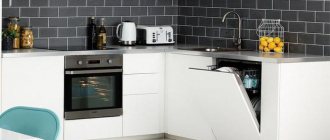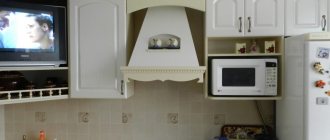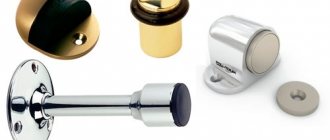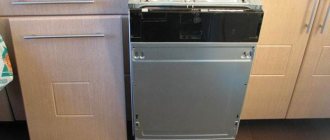Installation and connection of the dishwasher can be divided into 3 stages:
- preparation and securing of built-in equipment in a special niche
- connection to the electrical network
- connection to water supply and sewerage
Let us consider in detail, indicating common errors, precisely the stages of installation to utility networks and communications.
Electrical connection
To connect the dishwasher to a 220V network, you will not need many materials:
- three-core copper cable VVGnG-Ls 3*2.5mm2
- 16A socket “Schuko” type with grounding contact
- RCD or diffavtomat 16A with leakage current 30mA
A dishwasher (DMM) is not a particularly powerful consumer of electricity, such as a hob (from 7 kW and above). Its power usually does not exceed 2.0-2.5 kW.
Modern energy consumption models correspond to class “A” or “A+”. That is, in a year, approximately 220 kW will run on your meter.
Despite this, it is still advisable to connect the PMM at the repair stage to lay an independent cable line in a separate groove.
If your renovation has been completed a long time ago, and after purchasing the equipment you don’t feel like scratching the walls again and ruining the wallpaper, then you can make do with the existing outlet. Just be sure to make sure that it is protected by an RCD.
Connecting a dishwasher through a simple modular machine is extremely dangerous.
The socket should be placed at a convenient height - up to 90cm from the floor level.
At the same time, place it on the right or left side of the washing machine, but not behind it.
Please also take into account the fact that the total length of the cord with plug for this equipment rarely exceeds 1.0-1.5 m. Based on this, choose a place for the outlet so that you don’t have to use an extension cord later.
The outlet itself must, of course, be grounded. But not everyone has this same grounding. Especially in apartments in old high-rise buildings.
Therefore, many people use regular ones, and everything seems to work fine. However, the level of protection will no longer be sufficient.
Roughly speaking, if there is a grounding contact and there is a current leak, then you will not even be able to turn on the RCD. The consequences of these leaks, even small ones, can be quite lethal.
With a simple socket, the shutdown will occur only at the moment when you touch the body, which is already energized.
And you will still feel this electric shock, at least at the initial moment.
How to secure
To connect the dishwasher with your own hands, you need to provide installation and fastening. The work progress depends on the type of device (built-in or free-standing machine).
If a free-standing electrical appliance is connected, it simply needs to be leveled to the building level. The floor surface should be as flat as possible. If this requirement is not met, the quality of the machine will be impaired. Thus, improper spraying of water leads to errors in washing (the dishes remain dirty).
To correct the situation, all floor-standing models are equipped with legs that can increase in height. Using a building level, you should check the position of the PMM and, if necessary, tighten the legs.
If the model is built-in and the cabinet was made for it, then the dimensions will correspond exactly.
In this case, small gaps (0.5 cm) are left on the sides. This is necessary so that the machine can be conveniently placed in a niche. The top panel should rest tightly against the countertop. To do this, enlarge the legs of the device and check with a level.
Sometimes a custom-made cabinet may be higher than expected. To properly connect the device under such conditions, chipboard is placed underneath the legs of the PMM. In other words, there should be no gaps at the top.
After installation, the device must be secured. For this purpose, holes are provided in the side and top parts of the housing. Through them, the household appliance is attached to the countertop and cabinet walls. The kit also includes brackets. They are screwed to the tabletop and body of the machine.
Another problem during installation can be an overly wide cabinet. This installation situation is possible if compact household appliances were purchased after ordering the headset. To eliminate gaps, you can use 2 methods:
- Arrangement of planks. In the front and back of the cabinet, strips are attached to the sides at the required level. After this, the body of the device is attached to the slats.
- Manufacturing of false panels. This is a more expensive and time-consuming way to install a dishwasher yourself. However, this approach achieves the tightest fit.
Connection to water supply and sewerage
Connecting the dishwasher to the water supply can be done in two ways.
The first is when you are at the stage of construction or major renovation, and you can afford to lay separate pipes, trench walls, etc.
The second is when your entire kitchen has already been installed and all finishing work has been completed. At the same time, you bought a dishwasher and you need to connect it all somewhere, to the existing water supply and sewerage system with minimal alterations and hassle.
Grounding electrical wiring
PMM is one of the most dangerous equipment from the point of view of electrical safety. And since the kitchen has the most equipment, the tension increases accordingly. Therefore, it is necessary to have a grounding connection when installing the PMM.
If there is a grounding, there is a possibility that the phase voltage of the electrical network will appear on the device body in the event of a break in the neutral wire. This kind of situation can act as a catalyst for electric shock to a person. Now you know how to properly prepare the electrical wiring for installing the machine.
Installation of new pipes
For major installation you will need a varied range of materials:
- polypropylene pipe PPR PN20 with a diameter of 20mm
- water socket
- union nut connectors
- 90 degree connection fitting PPR-90
- HP/HP elbow with ¾" external thread
- FUM sealing tape
When installing pipes, the socket method is used. To do this, you will need a special apparatus for soldering polypropylene pipes.
The total length of the pipe and the number of fittings are selected individually. This depends on how far the dishwasher is from the cold water collector.
To begin with, mark the route where the pipes will be laid from the distribution manifold to the installation site of the PMM.
Then, use a wall chaser to cut to the required depth.
Next, connect the PPR connectors with a union nut to one of the manifold outputs.
Cut a piece of pipe so that it will last until the first turn or corner. At the same time, do not forget to leave a margin of 15mm for connections on each side.
Connect the pipe and fittings using the soldering method, controlling the position of the elbow.
After connecting all the pipes along the marked area, install a water socket at the very end. Be sure to fix it on the wall.
Next, screw a ¾-inch male threaded elbow into the water socket.
Mount the water supply hose onto the angle.
The AquaControl or AquaStop system with which it may be equipped should protect against leaks in the event of a breakdown and automatically stop the water supply.
Turn on the water and check the entire system. If everything is fine, you can finally seal the groove.
Installation by a wizard
Not everyone can handle installing a dishwasher with their own hands. Therefore, it is better to call a specialist with experience working with built-in household appliances.
Masters will professionally perform the following work:
- They will securely secure the household appliance in a cabinet niche or install it in the right place,
- Extend plumbing pipes
- They will lay hidden wiring from the electric meter to the car,
- Install a circuit breaker (RCD),
- They will install a separate outlet,
- They will check the car in test mode.
The final cost of installing a built-in dishwasher is determined after a specialist inspects the installation site of the unit. Based on information collected on the Internet, average prices can be presented in the following table.
| Type of work | Cost, rub. |
| Standard dishwasher installation | 2000 |
| Finishing of plumbing communications | 1000 |
| Built-in under the countertop | 2000 |
| Electrical connection | 2000 |
| Facade canopy | 800 |
| Test run with refilling detergents | 1200 |
| Call the master | 300 |
Drain connection and installation in the kitchen opening
All that remains is to connect the drain hose from the PMM to the sewer outlet through an adapter collar of the appropriate diameter.
Do not forget that the drain pipe must be mounted at an angle, allowing for a 1cm height difference per 1m of length.
And the drain hose itself has a bend at 70cm from the floor. That is why it is attached to the top of the dishwasher, and not at all so that it does not dangle.
All that remains is to connect the washing machine to a power outlet and check the functionality of the entire system. Then secure it in a specially prepared opening.
By the way, some models, for example from Siemens, have non-standard sizes. Therefore, think about your kitchen furniture in advance.
When installing in an opening, do not forget about the metal plate that must be nailed to the bottom of the tabletop (for the Bosch model).
This thing is mounted at the very edge and is a vapor barrier, like a screen. With it, the countertop will not swell from steam.
For some reason, many people throw it out and replace it with aluminum tape, securing it both to the table top and to the side walls of the car.
Electrolux, instead, comes with something like a piece of rubber that sticks on the sticky side.
After installation and connection, the first wash should be done without dishes, using powder or special cleaning tablets.
This procedure should destroy all bacteria and deposits formed after long-term storage in the store.
Choosing a location
You need to choose the location of the equipment before purchasing the PMM. If you decide to build a dishwasher into your kitchen furniture, you need to know the dimensions of the corresponding niche. It can be located under the countertop, cooking panel or under the sink .
Approximate size ratio of niche and built-in dishwasher
The place to install the dishwasher should be close to the sink , which is already connected to the water supply and sewerage system. If the distance to communications exceeds 1.5 meters, problems may arise in the operation of the device.
Washing machine and dishwasher built next to the sink
Make sure that there is an electrical outlet . Since the dishwasher consumes quite a lot of electricity, it is dangerous to use an extension cord to operate the PMM, especially if several devices will be connected to it.
The extension cord must not be placed behind the rear wall of the PMM
For a compact dishwasher that can be placed directly on the countertop, the issue of supplying communications is easier to solve, since it can be easily placed as close to the sink as possible. This option is optimal when there is no niche with the required dimensions in the furniture. There is no need to make a connection to the sewer at all; just place the drain hose in the sink.
Connection via sink siphon and faucet.
There is a simpler option for connecting a dishwasher, in which there is no need to install separate pipes for draining and supplying water.
You only need to change two things:
- standard siphon under the sink to a special one
It differs in that its design already has a place for connecting the drain hose - a fitting, and sometimes two.
You can, of course, redo the sewer drain by installing an additional pipe and seal there.
The whole thing is inserted by hand, without using any special tools.
However, do not forget that connecting dishwashers and washing machines directly to the sewer pipe may be accompanied by the appearance of unpleasant odors.
Experts advise making this connection through a check valve.
Kinking or bending the hose at a height, which should act as an alternative to the valve, only helps with constant use of the equipment. Of course, your water will not return.
However, if the system stands for a couple of weeks without work and water (for example, in a country house or in a country house), everything will dry out and the stench in the kitchen will be very sensitive.
- the second thing you need to install is a tee with a ¾-inch thread
Through it, the water itself will flow into the machine. It is installed instead of the standard connector that goes from cold water to the mixer.
Screw this tee to the cold water supply hose or pipe.
Next, change the siphon. Unscrew the screw from above, holding the siphon itself from below so that it does not fall.
Disconnect the drain from the sewer. To do this, simply pull it towards you with force. It should come out of the rubber retainer.
Assemble a new siphon from the components, not forgetting the gaskets, and install it in place of the old one.
Connect the flexible drain pipe to the sewer pipe. All that remains is to connect the dishwasher drain hose to the siphon tube through a special adapter.
Included with this adapter, be sure to look for a valve, it blocks the reverse flow of water.
Fill the sink with water and check that there are no leaks anywhere.
Installation diagram
Built-in dishwashers come in full-size, narrow and mini units. Their installation diagram is shown in the lower figure.
- The dimensions of full-size machines are defined as the width, depth and height of the device body. Standard dimensions W/D/H - 598/545/818-868 mm. Such dishwashing devices are built between the floor cabinets of kitchen furniture under the countertop;
- Narrow dishwashers are compact. W/D/H - 448/570/805-870 mm. They are also inserted between the cabinets under the tabletop;
- Mini cars are conditionally classified as built-in appliances. Small devices (550/500/550 mm) are installed both inside kitchen cabinets and placed on the table.
In each specific case, the dimensions of the washing units must be clarified. Manufacturers strive to unify the dimensions of appliance housings as much as possible, based on the standard dimensions of mass-produced kitchen units.
The opening between the floor cabinets, 60 cm wide, allows you to build in a full-size model with its standard height of 87 cm. Before purchasing a dishwasher, you need to consider all of the above.
First launch of PMM
Before starting, you will have to activate the test wash, since there is a possibility that the parts and elements inside the machine are lubricated, this will allow you to wash it inside, thereby getting rid of dirt and dust. You can see how the machine works, whether it hums, how quickly the water fills, how much detergent is needed, whether it is necessary to add salt or rinse aid. If you are connected to hot water directly, look at the quality of the water, whether there are streaks or stains on the dishes.
Be sure to turn the sprayer over before turning it on to see if it rotates normally. After this, pull out the filter and see if it is intact. Fill in the gel, add salt, and on the control panel you will have to indicate the type of product you are using. We launch the PMM and observe the work. If you hear any strange sounds or see a leak, all this can be corrected. Don't forget that you will need to let the machine dry and cool. Once you understand how to use the equipment, you can start washing dishes if all defects are absent or eliminated.
The importance of using instructions
Manufacturers are responsible for the quality of their products, so new dishwashers have a warranty - from 12 months to 5 years. A faulty Chinese unit can often be returned for service within 1 year, while a European unit can be returned for service within 2 years.
However, incorrect installation of the machine, contrary to the manufacturer’s requirements, deprives the buyer of the right to free repair or replacement of the equipment.
Consequently, the manual becomes the main document and guide for installing a dishwasher. This is a booklet with a detailed description of the process of installing and connecting a new dishwasher to the water supply and sewerage system.
The instructions also contain technical requirements that relate to the parameters of the connected electrical network, pressure in the pipes, etc. The characteristics of the machine also need to be taken into account.
In the instructions, the description of all actions is accompanied by clear diagrams that show how to correctly connect the hoses, fix the machine in the cabinet, and position it relative to the pipes (+)
Thus, fully built-in PMMs with a large mass are placed on the floor, additionally fixed on the cabinet walls or countertop. But compact models can be integrated into a cabinet that can support their weight, even taking into account loaded containers and water.
If within six months any dishwasher parts fail due to improper placement of hoses or strong vibration of the housing, they will have to be replaced at your own expense - the warranty will be voided.
Preparatory work
It is necessary to pay sufficient attention to two aspects before starting work - choosing a location and preparing equipment for setting up a water supply and outlet. Let's consider each point in detail.
Selecting a location
It is recommended to take care of the installation location before purchasing.
Free-standing models simply need to be placed next to a dishwasher outlet and water supply. It is important to consider that it is convenient for the owner to place the dishwasher during operation.
With built-in models it is more difficult, since it is necessary to select a module of the first level, that is, cabinets standing on the floor that fit the dimensions. A module adjacent to the washing furniture (for example, a washing machine) is a suitable place, since the water return and drainage units are located nearby.
Installing a countertop dishwasher is the easiest. It is placed on any surface next to an outlet and a sink.
The hose for connecting the dishwasher should not be large, otherwise the supply and drainage of liquid will be difficult, which leads to quick breakdowns.
Preparing additional equipment
Manufacturers of units usually list what tools may be useful for installation. But this takes into account the fact that all preliminary work has already been done.
To save time, it is recommended to stock up immediately:
- hammer;
- screwdriver;
- tape measure;
- pliers;
- adjustable wrench;
- a set of screwdrivers.
If you need to install a socket, you should purchase the device itself, a socket box, a three-core copper cable, and a dishwasher machine.
The socket must be of a European type with moisture protection.
If the voltage in the house fluctuates, you need to purchase a voltage stabilizer. It can be installed on several devices at once. In case of unforeseen situations, it will save the unit from burning out.
To connect the water, purchase a dishwasher tee, rubber gaskets, and fastening ties.
Water hose
The dishwasher has two hoses:
- Jellied.
- Drain.
The first (inlet) hose is designed to supply water to the machine. It must withstand operating pressure and meet temperature requirements.
So, for hot water supply lines the permissible temperature is 65-70°, and for hot water supply lines - 20°. Externally, it is a smooth hose with two threaded connecting elements at the ends (in the form of union nuts).
The drain hose ensures that waste water is discharged into the sewer system . It is not designed for high pressure, so the requirements for it are much softer.
Basically, such hoses are selected by length. As a rule, drain hoses are corrugated, and their connecting elements are of the usual bell-type type, without threads. You can learn all about dishwasher hoses here.
Answers to common questions
Many owners, having decided to install a dishwasher themselves, are faced with questions to which they cannot get an accurate answer.
So that you are prepared for unforeseen situations, we have compiled a selection with answers from experts:
- If the dishwasher can only be placed next to a stove, refrigerator, or high-power electrical appliance, then it is important to make a separate line for the unit. If this work is not carried out, the outlet may overload.
- People who have just bought a unit or are looking at it constantly wonder what kind of water the dishwasher is connected to. All this is indicated in the device passport. Many expensive models can indeed be connected to a hot collector, but this is not so profitable. It is also known that there are fewer problems with cold water supply.
- If it is impossible to extend pipes, the equipment should be placed near the sink.
- Extension cords often cause fires, so it is best to avoid them if possible.
- Another popular question is where to install the outlet for the dishwasher? There are certain height standards - this is from 10 to 50 cm from the floor. The most important thing is to separate the floor and the outlet at a decent distance to reduce the risk of flammable materials.
Possible embedding options
A cabinet for embedding a PMM may look different.
We suggest considering several popular options that are convenient for installation. Each type of installation is associated with difficulties
To minimize them, it is important to comply with the above conditions and requirements specified by the manufacturer in the instructions. We offer several recommendations for installing a dishwasher in different places
Cabinet installation
If there is a cupboard with a width of more than 45 cm next to the sink, then it can be used to install a dishwasher. The advantage of installation close to communications is the ability to integrate machine hoses into an already installed system under the sink.
Dishwasher connection option: extended cold water supply pipe with shut-off valve, drain hose outlet into the washing siphon, separate electrical outlet
Important. Then you need to alternately connect the machine to the sewerage system, water supply and power supply.
If necessary, an additional water seal with a drain pipe should be installed.
The decorative front panel, which is attached to the machine door, is usually assembled from removed cabinet doors or ordered additionally. Partially built-in models do not need to be decorated, so their installation is a little easier.
Installation in a free-standing module
If there are no free cabinets for new equipment, but there is enough space in the kitchen, you can order a separate module, but you need to install it near communications.
A cabinet for additionally purchased equipment – a compact washing machine and dishwasher. The module is installed as close as possible to the sink, which facilitates connection
It is important to level and secure the unit so that it does not vibrate during operation or move the cabinet. Hoses and pipes are laid along the wall, but they are easier to access
To get to the communications, you don’t have to dismantle the car, but simply move the cabinet away from the wall. When the dishwasher is installed under a common kitchen countertop, it has to be removed for maintenance, since otherwise the hose connections cannot be reached.
Niche installation
If the kitchen has a niche for installing a microwave, oven or other small equipment, it can also be used to install a dishwasher.
Dimensions of the compact model along with drawings can be found in the installation instructions. If the niche is located far from communications, you will have to stock up on long flexible hoses to supply cold water and drain used water
Built-in compact models should not be confused with free-standing ones. The latter do not have to be placed in a niche - any horizontal surface is suitable for their installation.
So that the dishwasher is not conspicuous and is hidden like the rest of the equipment, the front part is covered with a decorative overlay in the style of a facade.
Developers usually think through various options for installing equipment, so the installation instructions include drawings and diagrams with dimensions, useful tips, and technical recommendations.
It’s easier to find a place for a compact model, but don’t forget that a mini-machine is not able to serve a large family.
If embedding is not suitable
What to do if there is absolutely no space in the kitchen to install a built-in model? It remains to consider free-standing options, the design of which does not require special installation. They can simply be installed on the floor, countertop or niche, leveled, and then connected.
There is another way to fulfill your own dream of installing a built-in dishwasher - a complete reconstruction of the kitchen unit, with possible repairs or relocation of communications. It is more expensive and requires not only financial investments, but also time.











